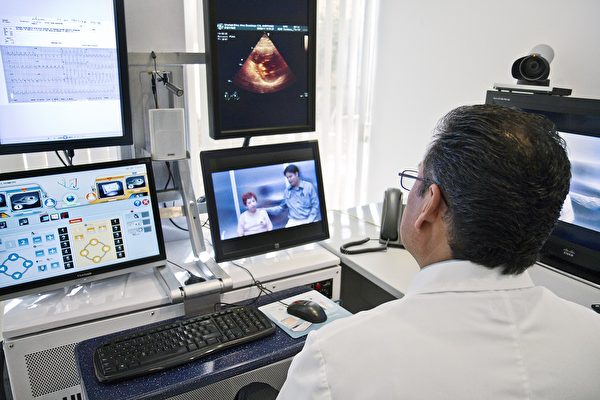Telemedicine has become a key component of modern medical services, especially after the COVID-19 pandemic, the global demand for telemedicine has increased significantly. Through technological advances and policy support, telemedicine is redefining the way medical services are provided. This article will explore the development status of telemedicine, the driving force of technology, and its profound impact on the industry.
1. The development status of telemedicine
1. The epidemic promotes the popularization of telemedicine
During the COVID-19 pandemic, the use of telemedicine has risen rapidly. For example:
The use of telemedicine in the United States has increased from 11% in 2019 to 46% in 2022.
China's "Internet + Medical" policy has accelerated the rise of online diagnosis and treatment platforms, and the number of users of platforms such as Ping An Good Doctor has increased dramatically.
2. Global telemedicine market growth
According to Mordor Intelligence, the global telemedicine market is expected to grow from US$90 billion in 2024 to more than US$250 billion in 2030. The main growth factors include:
Long-term demand after the epidemic.
The need for chronic disease management.
The thirst for medical resources in remote areas.
3. Policy support from various countries
Many countries have introduced policies to support the development of telemedicine:
The US government has expanded Medicare's coverage of telemedicine services.
India has launched the "National Digital Health Plan" to promote the popularization of telemedicine services.
II. Technical drivers of telemedicine
1. 5G technology
5G networks, with their low latency and high bandwidth characteristics, provide technical support for telemedicine. For example:
5G networks support high-definition real-time video calls, which facilitates remote diagnosis between doctors and patients.
Remote surgery is possible, for example, Chinese doctors have completed multiple remote surgical operations through 5G networks.
2. Artificial Intelligence (AI)
AI brings smarter solutions to telemedicine:
AI-assisted diagnosis: AI-based diagnostic systems can help doctors quickly identify diseases, such as by analyzing the image data uploaded by patients to determine the condition.
Smart customer service: AI chatbots can provide patients with preliminary consultations and health advice, reducing the workload of medical institutions.
3. Internet of Things (IoT)
IoT devices provide patients with the possibility of real-time health monitoring:
Smart blood glucose meters, heart rate monitors and other devices can transmit data to doctors in real time to achieve remote health management.
The popularity of home medical devices has also improved the convenience and participation of patients.
4. Blockchain technology
Blockchain technology provides data security for telemedicine through its decentralized and tamper-proof characteristics, ensuring that patient privacy is not violated.
III. The impact of telemedicine on the industry
1. Reduce medical costs
Telemedicine reduces patients' commuting time and hospitalization needs, thereby reducing medical expenses. For example, American patients save an average of 20% of medical costs.
2. Improve medical services in remote areas
Through telemedicine, patients in remote areas can obtain medical services of the same quality as those in cities. For example, India has successfully solved more than 50% of rural diagnosis and treatment needs through telemedicine platforms.
3. Promote chronic disease management
Telemedicine platforms enable chronic disease patients to obtain long-term health management services through real-time monitoring and data analysis. For example: diabetic patients can monitor blood sugar through devices and interact with doctors remotely.
4. Reshape the doctor-patient relationship
Telemedicine allows patients to communicate with doctors more frequently and efficiently, transforming from the traditional one-time diagnosis and treatment model to a long-term health management model.
IV. Future trends of telemedicine
1. Popularization of remote surgery
With the maturity of 5G networks and robotics technology, remote surgery will gradually become a reality. Doctors can operate robots to perform difficult surgeries on patients in other places.
2. Personalized health management platform
Future telemedicine will pay more attention to personalized services and provide patients with customized health solutions through big data analysis.
3. Global telemedicine network
Transnational telemedicine cooperation will become a trend, and patients can choose the world's top medical resources for diagnosis and treatment through the Internet.
4. Application of VR/AR technology
Virtual reality (VR) and augmented reality (AR) technologies will be used for patient rehabilitation training and doctor education to further improve the effectiveness of telemedicine.

At Yonkermed, we pride ourselves on providing the best customer service. If there is a specific topic that you are interested in, would like to learn more about, or read about, please feel free to contact us!
If you would like to know the author, please click here
If you would like to contact us, please click here
Sincerely,
The Yonkermed Team
infoyonkermed@yonker.cn
https://www.yonkermed.com/
Post time: Jan-13-2025

